TechnologyCounter provides genuine, unbiased real user reviews to help buyers make informed decisions. We may earn a referral fee when you purchase through our links, at no extra cost to you.
List of 15 Best SPC Software
Showing 1 - 15 of 19 productsWinSPC is a software that streamlines statistical process control for businesses of all sizes. With its user-friendly interface analytics, WinSPC allows you to monitor and improve quality control, reduce costs, and increase efficiency. Say goodbye to...Read WinSPC Reviews
DELMIAWorks Manufacturing ERP is a tool designed to streamline and optimize all aspects of the manufacturing process. With its user-friendly interface and innovative features, it offers a seamless solution for managing resources, tracking production,...Read DELMIAWorks Manufacturing ERP Reviews
Statgraphics is a statistical analysis software known for its intuitive interface and robust features. With a long-standing reputation in the industry, Statgraphics has become a go-to tool for professionals, researchers, and students looking to make...Read Statgraphics Reviews
QI Macros SPC Excel is a tool that simplifies statistical process control for Excel users. With its user-friendly interface and extensive features, it helps businesses of all sizes streamline their quality control processes and improve overall effici...Read QI Macros SPC Excel Reviews
Predisys is a and dynamic software that optimizes and streamlines your business processes, providing accurate data analysis and enabling data-driven decision-making. With its user-friendly interface and innovative features, Predisys revolutionizes yo...Read Predisys Reviews
DataLyzer is an innovative software solution designed to revolutionize the way businesses gather, analyze, and interpret data. With its user-friendly interface and powerful tools, DataLyzer streamlines data management processes, enabling companies to...Read DataLyzer Reviews
SoftExpert EQM is a quality management software that helps businesses streamline their processes, reduce costs, and improve efficiency. With its intuitive interface and robust features, it enables organizations to effectively manage and monitor quali...Read SoftExpert EQM Reviews
SPC for Excel the ultimate tool for businesses seeking to streamline their data analysis process. With its user-friendly interface and powerful capabilities, SPC for Excel enables users to easily visualize and interpret complex data, empowering them...Read SPC for Excel Reviews
QC-CALC SPC is a essential software for high quality control and statistical process control. With its advanced features and user-friendly interface, QC-CALC SPC helps businesses make data-driven decisions to ensure optimal production processes and m...Read QC-CALC SPC Reviews
Analyse-it is a is a statistical analysis software designed to help businesses and researchers make sense of complex data. With its user-friendly interface and extensive range of features, Analyse-it empowers users to extract valuable insights and ma...Read Analyse-it Reviews
NWA Quality Analyst is an innovative software designed to revolutionize quality management processes. This powerful tool offers advanced features and capabilities that allow businesses to streamline their operations and enhance overall performance. W...Read NWA Quality Analyst Reviews
Isolocity is a is a software designed to streamline your business processes and boost productivity. With its user-friendly interface features, Isolocity revolutionizes the way you manage your tasks and projects. Experience the convenience and efficie...Read Isolocity Reviews
[FP]-LIMS, the ultimate software solution for all your laboratory needs. With its user-friendly interface features, [FP]-LIMS streamlines your lab processes and increases efficiency. Say goodbye to manual paperwork and hello to seamless data manageme...Read [FP]-LIMS Reviews
SPC XL is a leading software designed for statistical analysis and quality control in manufacturing and service industries. Empower your team with real-time data analysis, customizable charts, and control charts for improved decision-making. With SPC...Read SPC XL Reviews
GainSeeker is a software that helps businesses track and analyze data to improve performance and achieve efficiency. With its advanced features and user-friendly interface, GainSeeker is the go-to solution for businesses looking to optimize processes...Read GainSeeker Reviews
- What Is SPC Software?
- Top Reasons Why Businesses Need SPC Software?
- What Are the Top Key Features of SPC Software?
- What Are the Top Benefits of SPC Software?
- What Are the Steps to Choose the Right SPC Software?
- What Are the Types of SPC Software for Different Industries?
- What Are the Technology Trends for Best SPC Software?
- What Are the Deployment Options for SPC Software?
What Is SPC Software?
Statistical Process Control (SPC) refers to a software application utilized for the purpose of monitoring and analyzing the production process, with the objective of ensuring adherence to the quality standards associated with the product.
Manufacturers frequently employ quality control measures to ascertain that their products conform to industry standards and relevant requirements. Statistical Process Control (SPC) software is employed for the purpose of gathering and retaining data pertaining to the production process.
Subsequently, this data is utilized to generate charts and graphs that effectively illustrate the performance of various components within the production process. The provided data has the potential to identify areas within the production process that require improvement, as well as detect any components that fail to satisfy the established quality criteria.
The SPC program is capable of identifying outliers, which refer to numbers that deviate significantly from the expected range. Such outliers can serve as indicators of potential issues within a manufacturing process.
By detecting these anomalies, producers can proactively implement remedial measures at an early stage, thereby mitigating the risk of more significant problems in the future and ensuring compliance with established quality standards.
In general, the best SPC software holds significant value for manufacturers, as it serves to verify compliance of the manufacturing process with industry and regulatory quality requirements.
By employing this program, producers have the capability to promptly identify any anomalies or deviations, thereby ensuring compliance with the prescribed requirements for their products.
Top Reasons Why Businesses Need SPC Software?
1. Statistical process control (SPC) software facilitates the monitoring and regulation of quality throughout all stages of production, encompassing the entire spectrum from initial raw materials to the final output of completed products.
2. The purpose of implementing quality control is to guarantee that production processes adhere to predetermined standards or meet the specific requirements of customers.
3. SPC software facilitates the ongoing measurement, control, and monitoring of production and manufacturing processes within enterprises, with the aim of satisfying client requirements and meeting their expectations.
4. The process involves the monitoring and documentation of quality data, followed by its analysis and subsequent implementation of appropriate modifications to accommodate any fluctuations in product quality that may occur over time.
5. The online SPC software produces personalized reports that effectively demonstrate the extent to which the product satisfies customer specifications.
6. The early detection of process difficulties facilitates the timely identification and subsequent rectification of these problems.
7. SPC software facilitates the prompt identification of processes that deviate from acceptable control limits, allowing firms to promptly implement corrective measures.
8. The utilization of this technology allows enterprises to regularly and transparently monitor mistakes and irregularities in their operational operations.
9. The monitoring of anomalies in the overall process aids in the prompt detection of problems, the reduction of flaws, and the mitigation of liability.
10. Online SPC software possesses the capability to identify patterns within production data, including trends and cycles, so enabling a more comprehensive study and the acquisition of valuable insights.
11. The automated recording of data obviates the need for manual transcription, hence minimizing the likelihood of errors.
12. SPC software can additionally be employed to identify correlations between process variables and product quality.
13. The online SPC software facilitates the establishment of process parameters, enabling their dissemination and utilization across the entire enterprise.
14. The implementation of measures to limit excessive noise, vibration, and air pressure aids in the preservation of a secure working environment.
15. SPC software has the potential to enhance customer satisfaction by facilitating firms in meeting the prescribed standards and fulfilling customer expectations for their products.
What Are the Top Key Features of SPC Software?
The top key features of SPC software include:
1. Data Collection: The utilization of Statistical Process Control (SPC) software facilitates the collection and retention of data for the purpose of analysis. The aforementioned data possesses the potential to facilitate a comparative analysis between present and previous processes, hence enabling the identification of discrepancies and the identification of potential areas for enhancement.
2. Statistical Analysis: The software executes statistical computations and presents the outcomes in a visually accessible graph, facilitating prompt and effortless identification of patterns.
3. Quality Control Charting: The utilization of Statistical Process Control (SPC) software enables the generation of control charts, including X-bar, R, p-charts, u-charts, and X-bar and S charts. These charts provide a visual representation of process performance for a specified duration.
4. Process Capability Analysis: This functionality enables the assessment of a system's capacity to fulfill customer demands and facilitates the comparison of observed values with pre-established benchmarks.
5. Fault Detection: The best SPC software is capable of evaluating the performance of a system and providing notifications regarding the detection of abnormalities, such as mistakes inside the production system.
6. Documentation: Statistical Process Control (SPC) software has the capability to effectively store and administer documentation, hence facilitating the maintenance of an audit trail for your data.
7. Automation: Online SPC software has the capability to automate quality control procedures, hence enabling time savings and error reduction.
8. Interoperability: The integration of SPC software with pre-existing systems facilitates the establishment of interconnections and synchronization among all activities.
9. Reporting: The utilization of SPC software facilitates the generation of reports, hence enabling users to gain valuable insights into the comprehensive functioning of their system.
What Are the Top Benefits of SPC Software?
1. Increases product quality: The utilization of a dependable Statistical Process Control (SPC) software application can effectively contribute to the preservation or enhancement of product quality. This is achieved through the expedited and precise detection and response to process variations, surpassing the capabilities of manual methodologies.
2. Reduces costs: The use of a Statistical Process Control (SPC) methodology facilitates cost reduction in production operations through the mitigation of waste, rework, and scrap within the manufacturing process.
3. Improves process efficiency: The utilization of The best SPC software enables the identification of potential difficulties that may arise during production processes. These systems effectively notify users of such issues, allowing them to promptly implement remedial measures prior to the occurrence of any problems.
4. Increases production throughput: The implementation of an effective the best SPC software has the potential to enhance process throughput by facilitating the identification and elimination of production bottlenecks.
5. Enhances customer satisfaction: In order to mitigate the potential for customer discontent stemming from production challenges, the implementation of an effective Statistical Process Control (SPC) system can proactively identify and address these issues prior to their impact on the customer.
6. Enhances process control: An efficient Statistical Process Control (SPC) system can facilitate the achievement of stringent process control by enabling users to proactively identify and resolve process-related concerns.
7. Enhances process consistency: The implementation of a dependable online SPC software can effectively contribute to the preservation of process consistency, hence guaranteeing the maintenance of consistent product attributes.
8. Streamlines processes: The use of an integrated the best SPC software can facilitate process optimization within firms through the automation of manual tasks.
What Are the Steps to Choose the Right SPC Software?
The steps to choose the right SPC software are as follows:
1. Identify your needs: Firstly, it is imperative to provide a clear definition of the precise needs pertaining to the Statistical Process Control (SPC) software system that is sought for.
- What category of data are you interested in examining for analysis purposes?
- What kind of analysis are you interested in conducting?
- What is the required volume of data that needs to be processed?
2. Research your options: After determining your requirements, it is advisable to conduct research on the various SPC software systems that are currently available. Analyze and evaluate several characteristics to choose the system that most effectively aligns with your specific needs.
3. Check system compatibility and security: It is imperative to verify the compatibility of the SPC software with the pre-existing hardware and software systems. Furthermore, it is important to take into account the security protocols that have been applied in the system.
4. Cost analysis: Conduct an analysis of the comprehensive cost associated with the SPC software system. It is advisable to refrain from selecting a system just based on its initial cost. Please take into account all the features and expenses associated with the establishment, operation, and maintenance of the system.
5. Evaluate Customer service: Purchase a system that provides exceptional customer service to assist you in resolving any issues that may arise from utilizing the system.
6. Make an informed decision: Ultimately, it is vital to arrive at a well-considered conclusion regarding the system to be purchased.
What Are the Types of SPC Software for Different Industries?
There is a significant variation in the types of Statistical Process Control (SPC) software available across different industries. In the automobile sector, several widely used software applications for Statistical Process Control (SPC) are available, namely Statistical Process Control (SPC) software, Live Measurement Scanning (LMS) software, and Quality Assurance Management (QAM) software.
Within the food industry, there are numerous prevalent forms of Statistical Process Control (SPC) software that are commonly utilized.
1. Process Capability Reports (PCR) software, Monitoring & Control (M&C) software, Quality Assurance (QA) software, and Food Safety & Traceability (FST) software.
In the medical field, several widely utilized types of online SPC software are prevalent.
2. The software systems encompassed in this domain include Clinical Data Management (CDM), Medical Device Surveillance (MDS), Regulatory Compliance (RC), and Clinical Trial Management (CTM).
In conclusion, within the pharmaceutical business, various widely utilized types of Statistical Process Control (SPC) software may be identified.
3. The software applications encompassed in this study include Product Validation & Verification (PVV), Regulatory Compliance (RC), Supply Chain Management (SCM), and Quality Risk Management (QRM).
What Are the Technology Trends for Best SPC Software?
The technology trends for best spc software are:
1. The advancements in automation and machine learning have experienced a notable surge. This facilitates enhanced analysis and improved comparability of outcomes.
2. Real-time data acquisition and analytics refers to the process of collecting and analyzing data in real-time. This facilitates more efficient decision-making for companies within a compressed time period.
3. One notable aspect that has experienced a significant improvement is the enhanced accessibility. Cloud-based solutions have enabled the accessibility of statistical process control (SPC) software from any device.
4. The utilization of data visualization techniques and interactive dashboards. These tools facilitate the rapid and efficient identification of process-related problems.
5. Predictive analytics is a field of study that involves the use of statistical models and algorithms to make predictions or forecasts about future events or outcomes based on historical data and patterns.
This aids in the identification of uncontrolled circumstances prior to their influence on the process.
What Are the Deployment Options for SPC Software?
The deployment of SPC software can be implemented using various methods. The program is primarily intended for on-premise deployment, which refers to the installation of the software package on the hardware infrastructure owned by a corporation, including PCs, servers, and networks.
Moreover, depending on the specific product, Statistical Process Control (SPC) software can also be implemented in a cloud-based environment, wherein it is accessed via the internet instead of being installed on local hardware infrastructure.
Typically, customers retain control and ownership of their data while utilizing the services and infrastructure offered by a cloud provider specializing in secure private clouds (SPC). SPC software can be offered in a hybrid manner, so amalgamating the benefits of both on-premise and cloud-based solutions.

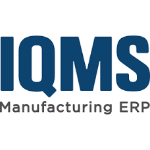
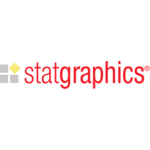
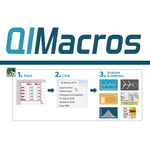
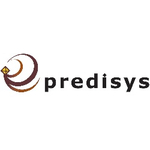
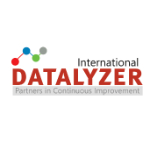
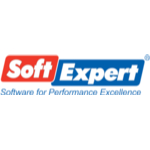


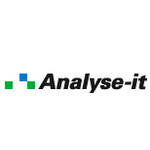
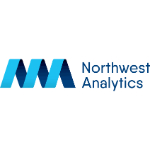

![[FP]-LIMS](https://media.technologycounter.com/vendors/software-products/software-logo/fp-lims.jpg)


